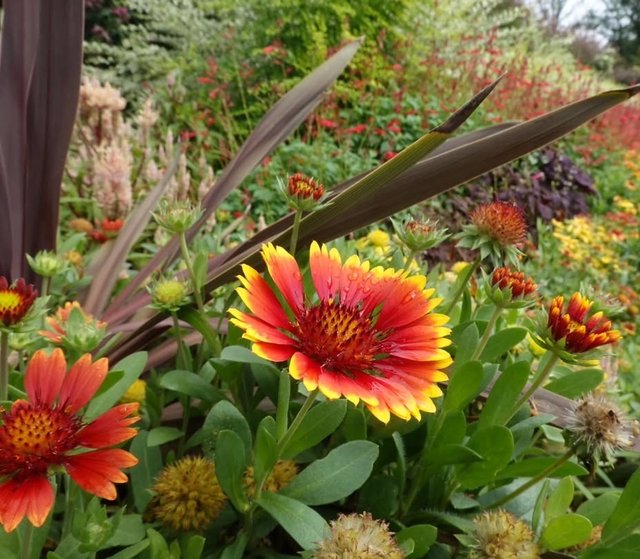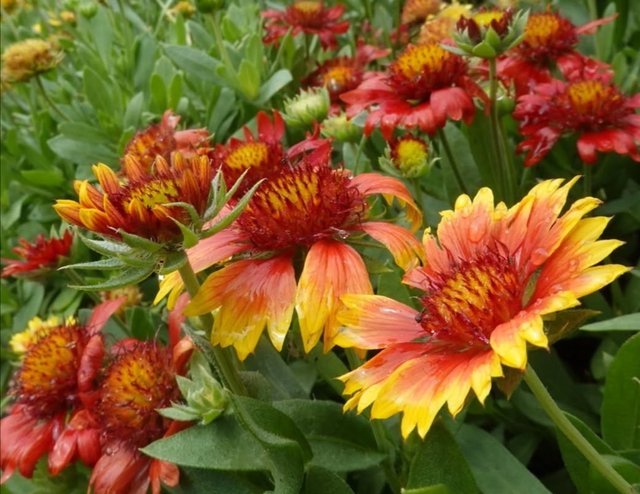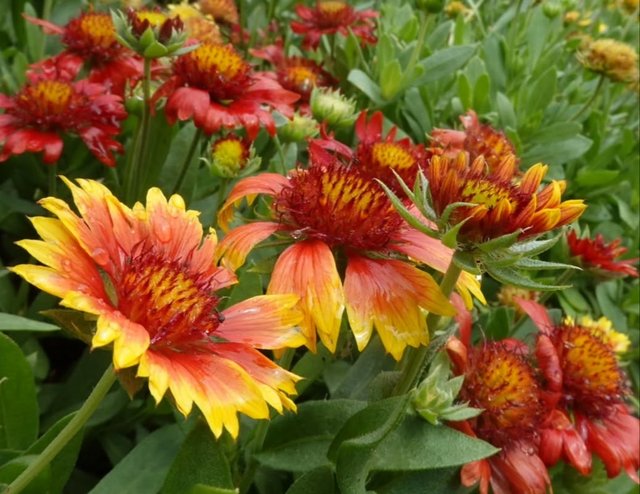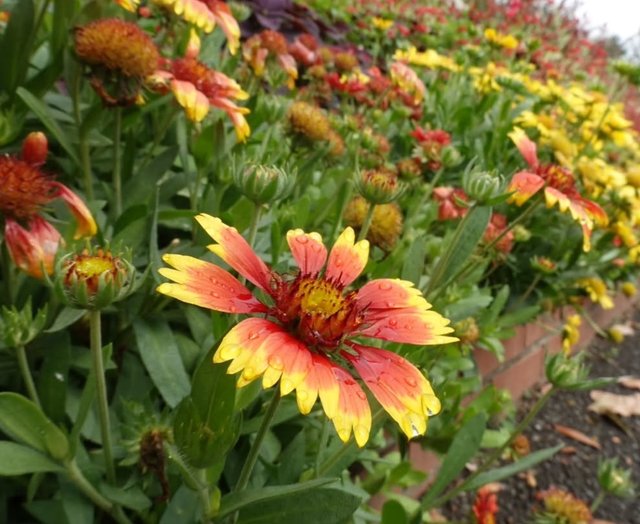Wonderful Indian Blanket Flower
The Indian blanket, also known as firewheel or blanketflower, is a strikingly beautiful wildflower that instantly catches the eye with its fiery blend of red, orange, and yellow petals. Belonging to the sunflower family, this vibrant flower is native to North America, particularly thriving in the southern United States, Mexico, and parts of Central America. It has long been admired for its resilience, adaptability, and colorful display that resembles a woven Native American blanket—hence its common name.
Appearance and Characteristics
Indian blanket flowers are easy to recognize. Each bloom features a bold reddish center that radiates out into petals tipped with bright yellow or orange, creating a fiery “sunburst” effect. The plant grows between 12 to 24 inches tall, with hairy stems and gray-green leaves that provide a soft texture. Its daisy-like flowers can reach up to 2.5 inches in diameter, standing out against the greenery in gardens, meadows, and along roadsides.
This wildflower is well-loved for its long blooming season, often starting in late spring and continuing through summer, sometimes lasting into fall in warm climates. Its bright colors and extended flowering time make it a favorite among gardeners and wildflower enthusiasts.
Habitat and Growing Conditions
Indian blanket is a hardy and drought-tolerant plant, well-suited for hot, dry climates and sandy or rocky soils where many other flowers might struggle. It thrives in full sun and prefers well-drained soil but is adaptable enough to grow in poor soil conditions. Because of its tolerance to heat and minimal water requirements, it is commonly used in xeriscaping and is considered a sustainable plant for eco-friendly gardens.
It is also a self-seeding plant, meaning it can return year after year without much effort from gardeners. In the wild, it often carpets large areas with its brilliant colors, creating fields that resemble a fiery quilt spread across the land.
Ecological Importance
Beyond its beauty, Indian blanket plays an important role in its ecosystem. It attracts a variety of pollinators, including bees, butterflies, and other beneficial insects. Its nectar-rich flowers provide a steady food source during the summer months, supporting the health of local pollinator populations. Additionally, birds sometimes feed on its seeds, further connecting it to the web of wildlife.
Because it establishes easily and tolerates poor soils, Indian blanket is also used in land restoration projects. Its deep roots help prevent erosion, making it a valuable plant for stabilizing soil in disturbed or degraded areas.




